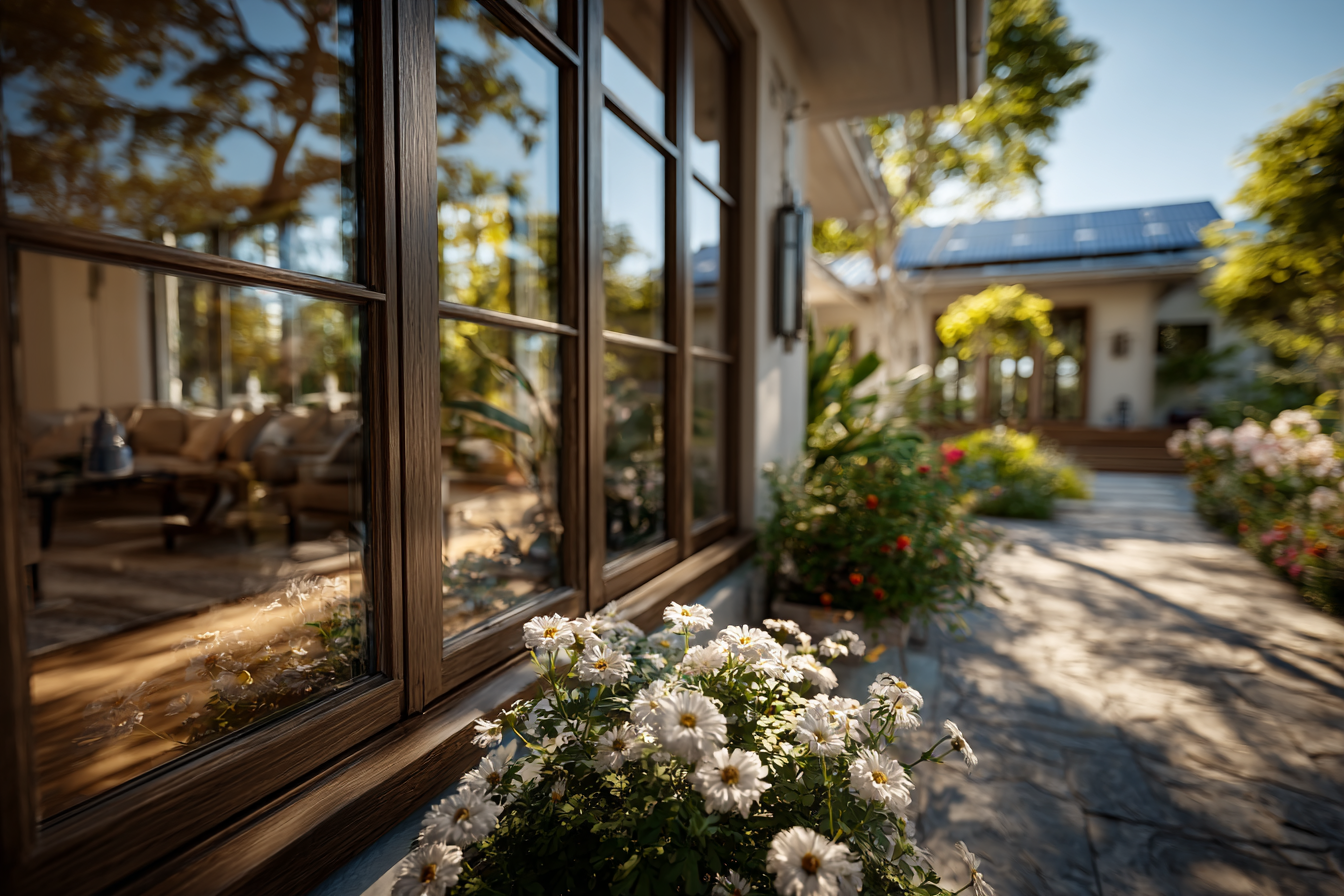The Future of Windows: How Smart Glass Can Cut Your Energy Bill

Written by Solenery
2 min read
Introduction
Your windows could be costing you hundreds of dollars a year in heating and cooling. But what if they could adapt to the weather—automatically darkening on hot days or brightening in the winter sun to help warm your home?
That’s exactly what smart glass (also called electrochromic or solar control glass) does. And while it may sound futuristic, it’s already being installed in homes, offices, and public buildings across Canada. In this post, we’ll explain how smart glass works, how much it can save you, and what options are available for Canadians today.
What Is Smart Glass and How Does It Work?
Smart glass is a type of glazing that changes its tint in response to sunlight, temperature, or a connected control system—without needing blinds or shades.
Types of Smart Glass:
- Electrochromic Glass: Adjusts tint using a small electric charge (most common in Canada)
- Photochromic Glass: Reacts to sunlight intensity (like transition lenses)
- Thermochromic Glass: Reacts to outside temperature, darkening on hot days
These dynamic systems reduce heat gain in summer and maximize solar warmth in winter—making them ideal for Canada’s four-season climate.
How Much Energy Can Smart Glass Save in Canada?
Windows are one of the biggest energy leaks in any building. Smart glass helps fix that.
Estimated Savings (Based on Canadian Case Studies):
| Location | Energy Savings | Annual Utility Reduction | Additional Benefits |
|---|---|---|---|
| Toronto, ON | 20–30% cooling | $200–$350/year | Less AC use in shoulder seasons |
| Edmonton, AB | 15–25% heating | $150–$300/year | More solar gain in winter |
| Vancouver, BC | 20% combined | $180–$270/year | Daylight optimization = lighting cuts |
Smart glass helps reduce glare, UV damage to interiors, and the need for window treatments—all while giving your home or office a sleek modern look.
Is Smart Glass Being Used in Canadian Buildings?
Yes—and not just in commercial towers.
Canadian Smart Glass Projects:
- University of British Columbia (UBC): Installed electrochromic glass in research buildings to test comfort and energy efficiency.
- Ottawa’s Zibi District: Net-zero mixed-use development features solar-responsive glazing on residential towers.
- Toronto Pearson Airport Terminal 1: Uses smart glass to regulate temperature and reduce cooling loads.
Some residential architects are now including smart glass in high-performance homes across Ontario, Quebec, and BC.
How Much Does Smart Glass Cost—and Is It Worth It?
Smart glass typically costs $100–$200 per square foot, depending on size, brand, and control system. That’s significantly more than double- or triple-pane glass—but prices are falling as demand grows.
Payback Depends On:
- Window orientation (south- and west-facing save the most)
- Whether you’d need shades or blinds otherwise
- Local climate: warmer summers = more savings
- Electricity rates in your province
Financing Tip:
If you’re building or renovating, bundling smart glass with other upgrades may make you eligible for rebates or 0% financing—especially if it’s part of an energy model.
Can You Get Rebates or Support for Smart Glass in Canada?
While most government rebates currently focus on traditional windows (like triple-glazed units), some innovation and green building funds do cover smart glass.
Potential Funding Paths:
- Canada Greener Homes Loan: 0% interest financing up to $40,000 for eligible retrofits
- CleanBC Innovation Fund: Covers commercial and multi-unit residential high-efficiency envelope components
- Municipal Innovation Grants: Available in Toronto, Vancouver, and Montreal for net-zero pilot homes
- Private developer incentives: Some developers offer upgrade credits when choosing advanced glass systems
Want to know what applies to you? Use Solenery Insights to check eligibility instantly.
Conclusion
Smart glass is no longer just for skyscrapers—it’s a real solution for Canadian homeowners looking to slash energy bills, reduce glare, and future-proof their homes. With more options and better performance than ever, the windows of tomorrow are already here.